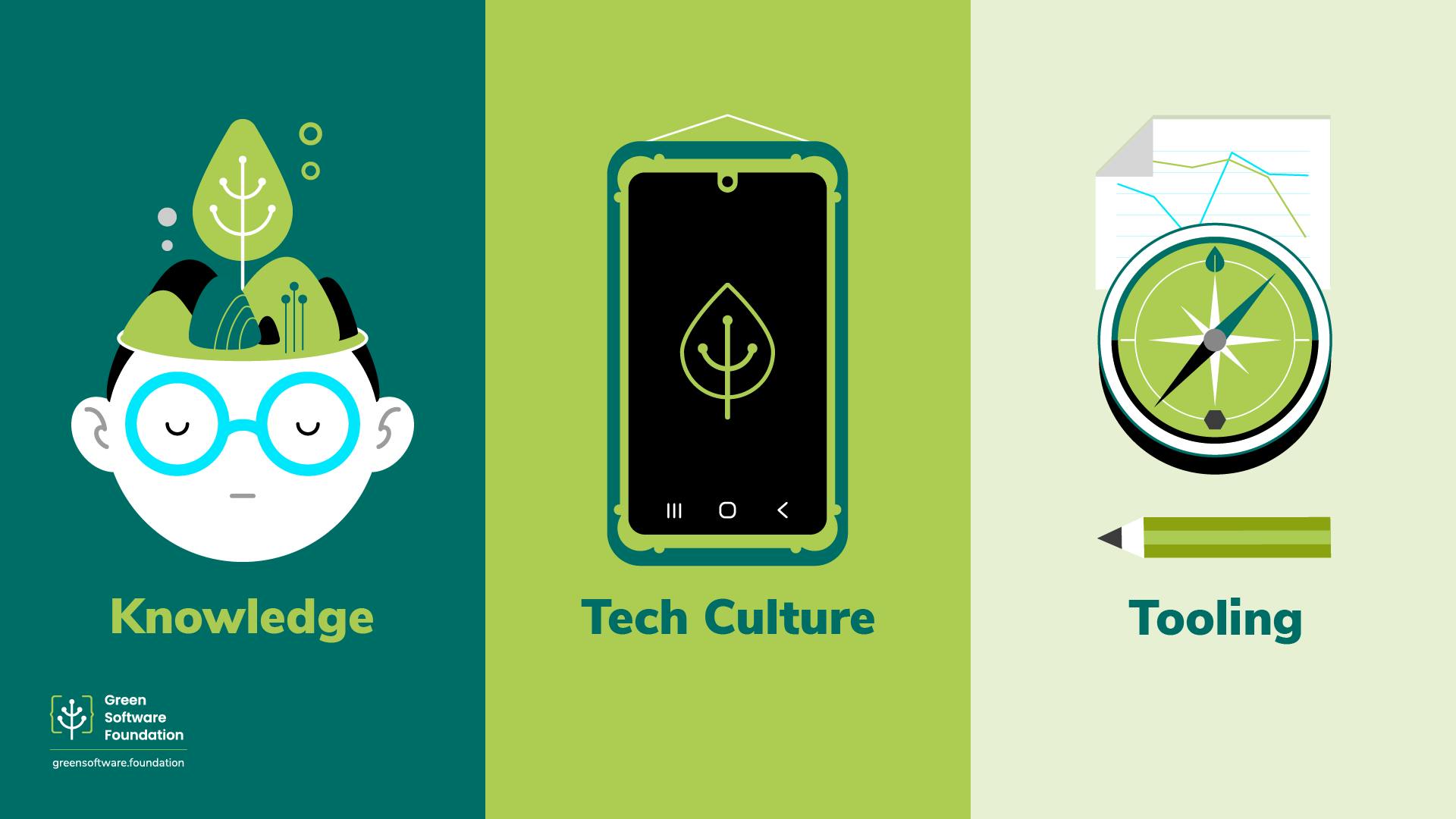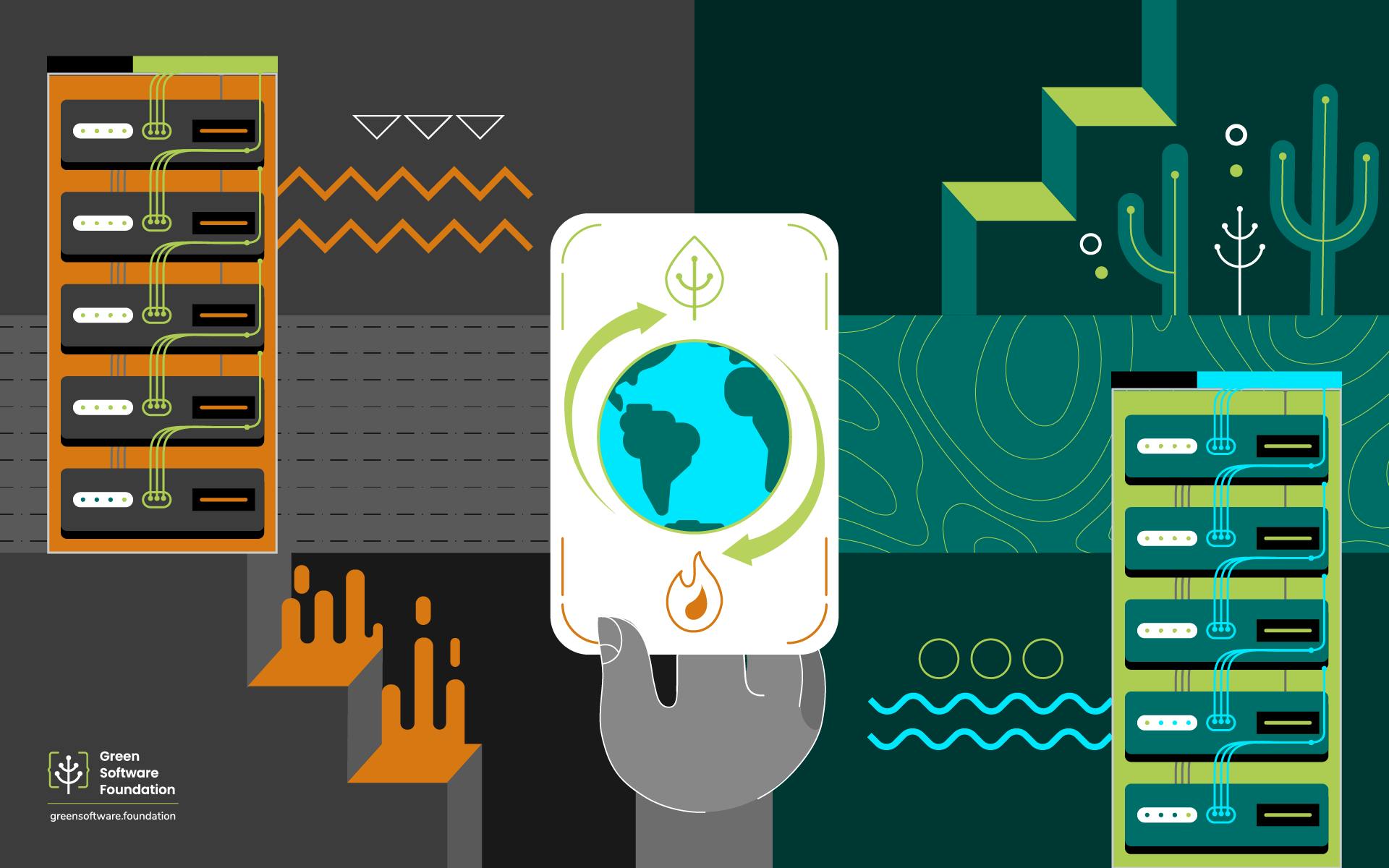“Our mission and vision tell us the place we want to reach, our Theory Of Change tells us how we will get there.” - Asim Hussain, Green Software Foundation.
From Vision and Mission to TOC
Our Vision and our Mission hold the top level values: “Change how we build software, so there are zero harmful environmental effects,” and “Build a trusted ecosystem of people, standards, tooling, and best practices for creating and building green software,” give us the general direction in which we are headed.
With limited resources and time, the GSF requires a framework for deciding which projects to prioritize and where to focus resources. The TOC describes why a particular way of working will be effective, showing how change happens in the short, medium, and long term to achieve the intended impact. It defines the strategy for the Foundation, how we will win.
Reaching for the stars: “Zero harmful environmental effects”
Once again, the outcome we want to achieve is this: “Change how we build software, so there are zero harmful environmental effects.” Software consumers should not have to choose between harming the environment and using software. The use of software should not harm the environment. That’s the future we want.
Our TOC is the basis and the process we need in order to get to that future. We have identified three main areas where we will focus our resources and make a significant impact. We need changes in Tech Culture, Knowledge and Tooling so that we can achieve our vision of green software.
What we are proposing is hard; adopting green software principles and patterns of working is not an easy choice. But changing the culture in the tech industry so that sustainability is a regular occurrence in conversations and discussions will make it easier to adopt green software patterns. Changing and widening the tooling will make it easier to adopt green software. And to enable both, we need changes in knowledge about the environmental effects of software.

Pillar 1 - Knowledge
What is the relevance of knowledge for GSF, and what changes do we want to affect?
We want to ensure that the environmental aspects of software are studied, taught, and understood by people working in tech. That means the curriculum for schools teaching tech has to include the ecological impacts of software. It means that information on green software needs to be readily available to software practitioners for individual upskilling; and that organizational training programs must include software sustainability.
The following are examples of GSF initiatives in the Knowledge domain:
Expanding GSF training to education levels in schools and universities
Making available basic training and certification courses for green software
Developing and maintaining learning resources and materials
Capture and publishing real-world case studies
Organizing and hosting the GSF Summit on an annual basis
Growing a global network of local green software user groups
Running competitions & challenges (e.g. Hackathons)
Launching and maintaining the GSF Speakers Bureau, including a speakers’ training program
Incentivizing organizations to provide internal training for employees
Developing custom training programs for organizations
Developing training materials and learning programs for leaders
Pillar 2 - Tech Culture
As its second pillar, GSF aims to change tech culture in the sense of making sustainability a core priority at all levels in the tech industry. Changing how we build software means adding the following dimensions:
Having software experts push for and champion sustainability in their work
Ensuring sustainability becomes a factor in software purchasing conversations and decisions
Making sure data around software sustainability becomes part of carbon reporting
GSF initiatives will include the following:
Working with external groups to influence policy
Developing a framework to score and certify of software providers based on sustainability aspects
Provide guidance and support to corporate experts and champions
Pillar 3 - Tooling
Tooling aims at making sustainability easy to act upon, so development teams can assess and improve the effects of their software. Our goal is to provide the industry with tools that allow measuring environmental impacts, e.g. carbon emissions, and tooling that helps reduce negative environmental impacts. Invariably, these tools will foster transparency in the industry with regard to carbon emissions.
Tooling initiatives will cover these areas:
Providing a standard for measuring software carbon impact (SCI)
Possibly developing a label “GSF verified” as an independent audit group
Maintaining and improving the Carbon CI Pipeline tool
Maintaining and improving the Carbon Aware SDK
Creating and maintaining a list of recommended tools (awesome green software)
What role does communication play?
Communication plays a central role for GSF, be it internal or external. All three pillars are naturally dependent on effective communication. We have leveraged the power of direct communication in newsletters and established a podcast, “Environment Variables”. We are currently also exploring the creation of a leaflet magazine. The whole communications ecosystem is well rounded with our web presence of blogs and articles readily available to all interested parties.
Please find the link to our full Theory of Change deck here.
This article is licenced under Creative Commons (CC BY 4.0)
